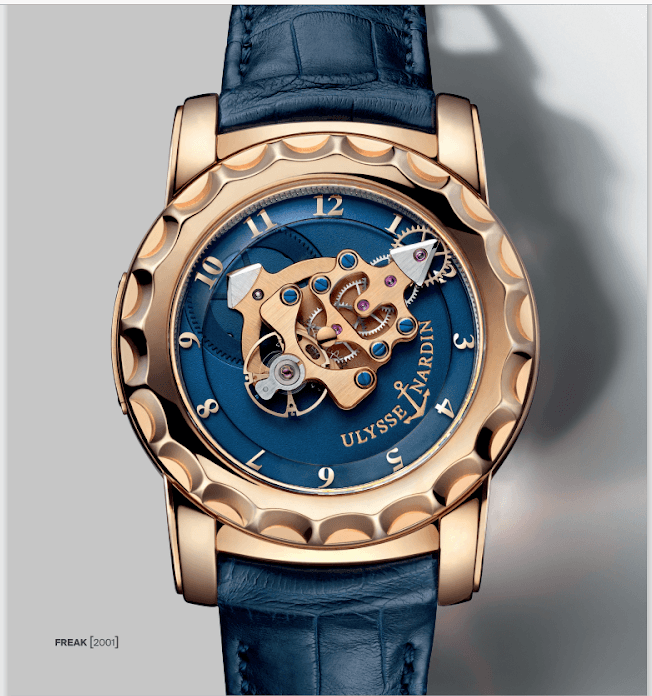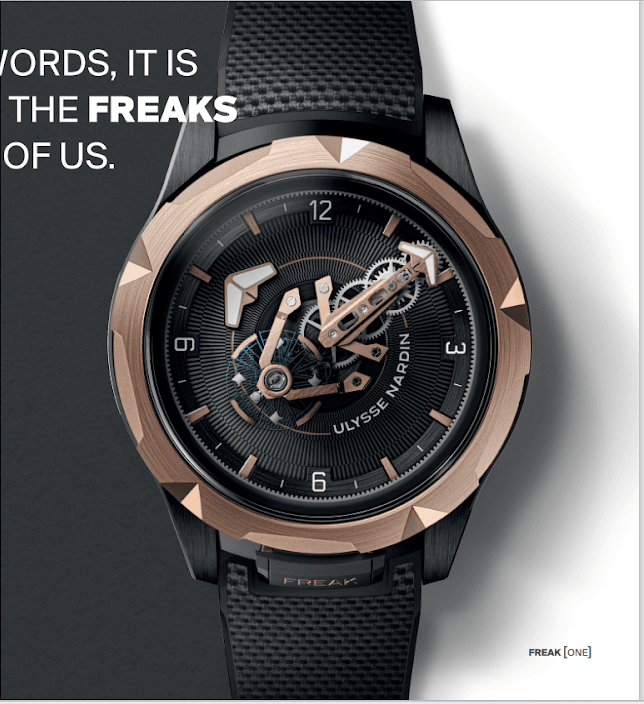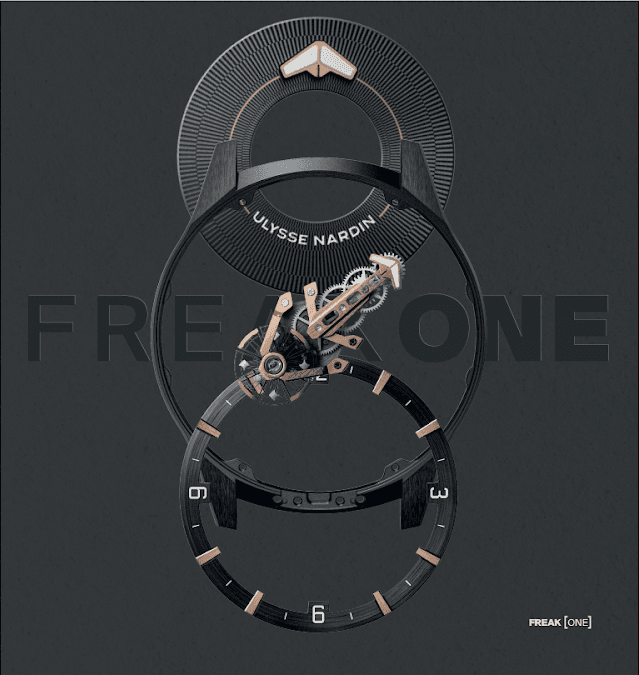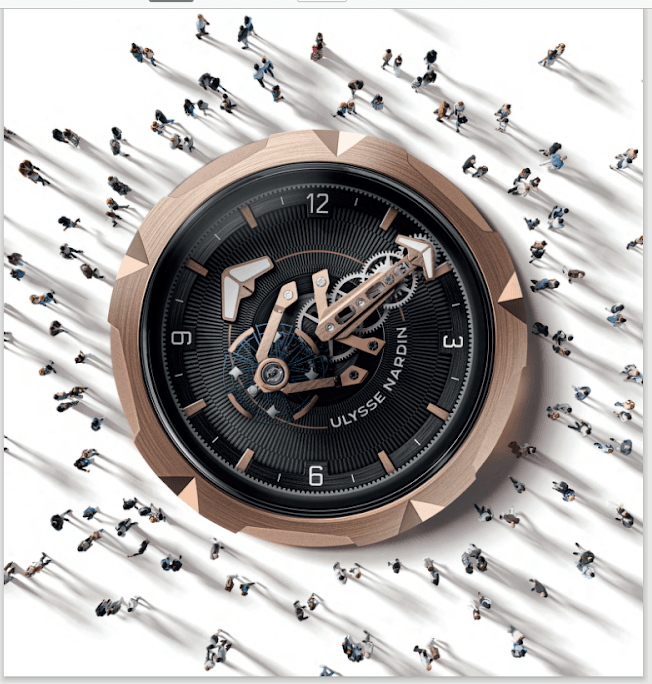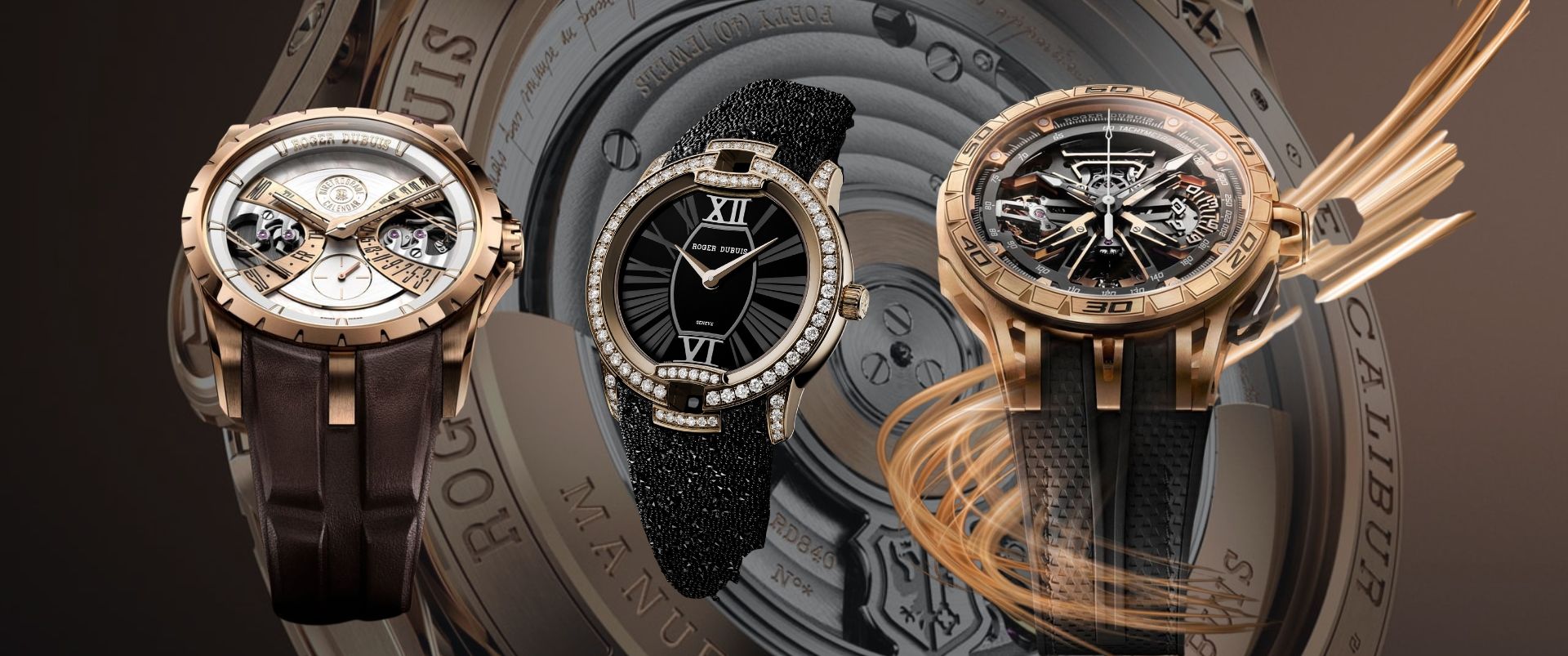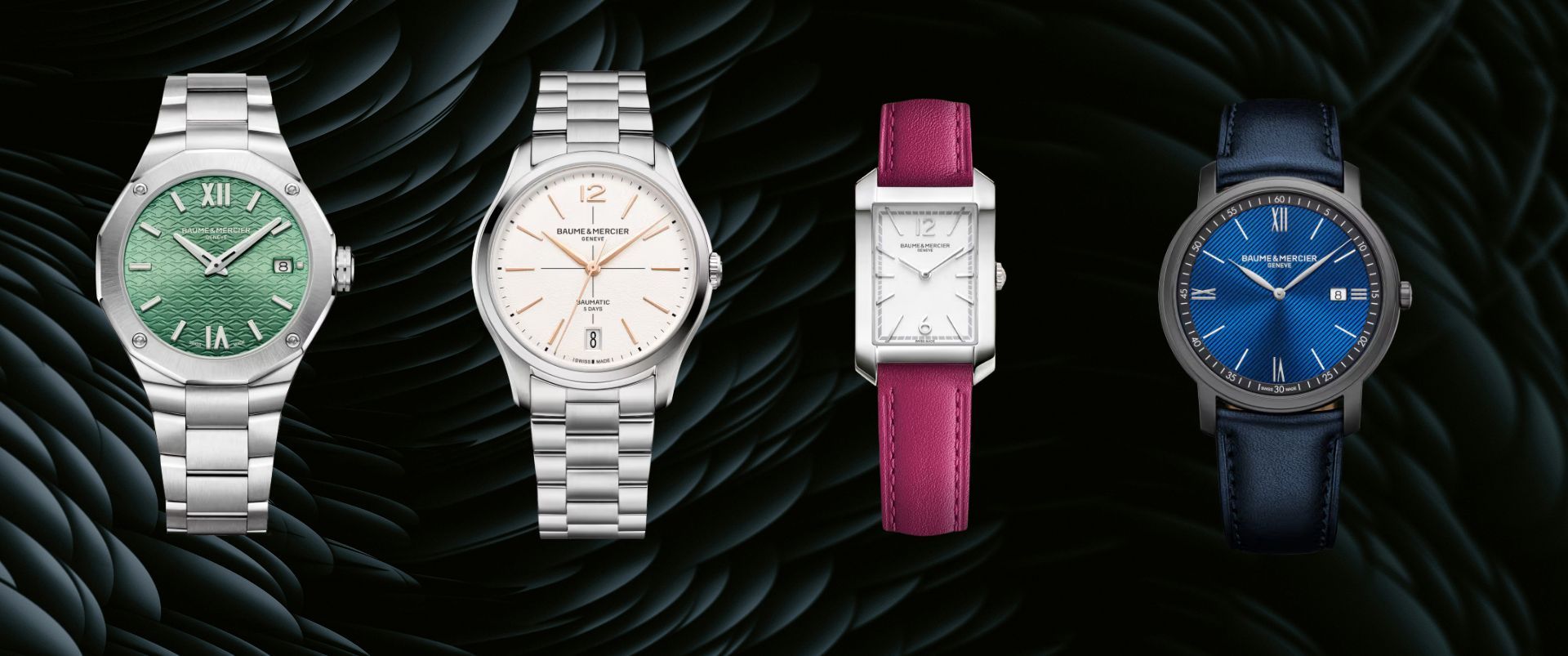Discovering The Kinetic Poem Of The Ulysse Nardin Freak In Motion: No Dial, No Hands, No Crown?
It is undeniable that people who were once considered Freaks have left indelible marks on the world we live in, including the landscapes of art, music, film, technology, finance, and even the culinary arts. Because a Freak is essentially defined as an outlier with extraordinary perception. And The Freak in watchmaking? Due to their sociological deviation, they are at odds with the established order; however, their vision is so potent and prophetic that the world is ultimately remade in their likeness.
The history of watchmaking can be broken down into two distinct time frames: before and after the invention of the Freak. The Freak, introduced in 2001 at Rolf Schnyder's urging, was the most radical departure from convention ever attempted in the field of horology. Now, for the first time, there was a mechanism capable of telling time. The Freak's crowning achievement was an innovative escapement designed by the great Ludwig Oechslin; it was a direct impulse, a double-wheel masterpiece made of silicon that looked like something out of a science fiction movie.
Ulysse Nardin’s CEO Patrick Pruniaux says, “It has never been more relevant to be a Freak. From musicians like Post Malone or Billie Eilish to graffiti and tattoo artists, to streetwear designers like Jerry Lorenzo, or the legions of Silicon Valley tech start-up multibillionaires, the individuals that were once outcasts and considered pariah — the Freaks — have become the primary success stories of the modern world. Because what is ultimately a Freak? It is a person so ahead of their time, so capable of seeing what others cannot that they threaten the very fabric of normality.”
In this case, Pruniaux is absolutely correct. Each of them defied expectations and established new standards for success. Thus, the Ulysse Nardin Freak should serve as a symbol for every anarchist, every iconoclast, and every rebel who has defied the imperious hegemony of the status quo and redefined the world we live in today.
It's been 22 years since the Freak introduced the concept of a timepiece that was also a kinetic sculpture, and now it's time to remind the world of its incredible, enduring impact. The Freak is the progenitor of every central idea in modern watchmaking. The Freak is responsible for the concept of complete see-throughness of the watch. The Freak is responsible for popularizing the idea of the engine as an artistic medium, in which the action itself serves as the focus of attention. All in all the Freak is responsible for the idea of civil time-telling as a form of kinetic art.
The watch industry was rocked in 2001 when the Freak debuted at the Basel Fair. Ulysse Nardin's booth had a pulsating crowd. There were whispers of a timepiece that defied every convention of haute horlogerie; a timepiece whose movement seemed to come to life, twisting and turning to indicate the time as if a living, sentient being did so.
What makes the Freak so special, anyway? The timepiece's movement rotates to provide an accurate reading, making it the first of its kind. The watch's powerful mainspring is housed in a barrel that spins once every 12 hours like the gas tank of a car. It's linked to a central pinion that rotates a gear train bridge around the case flange once per hour. The Freak's world-famous flying carousel orbits the Earth once every hour. The escapement, hairspring, and balance of the Freak are installed at the apex of the bridge. You can literally see it come to life in front of your eyes, just like the watch's heart.
And that is why the freak was the first watch without a dial. or your hands. or even a more conventional crown.
NO DIAL. NO HANDS. NO CROWN
The Freak is not like any other spinning, twirling, visually dynamic, but technically distinct watch on the market because of the following: It represents a pinnacle of horological purity, as its visible rotation is generated solely by the watch's own mechanism. A time comes to life thanks to the rotation of the watch, which occurs at the perfect rate along two axes. In my opinion, this is and always will be a masterpiece. So what about the other watches that appear visually complex, the ones with the massive oversized cases housing tornadoes of hyperspeed motion? To create the illusion of motion, all of those watches use layers of complexity to mask what is, at heart, a relatively simple movement. This is obviously influenced by the Freak, and it may even feature a revolving balance wheel around the outer rim of the face.
However, what you're actually looking at is a micro-mechanical device that has been purposefully built to look as complicated as possible, but which, from the perspective of watchmaking, serves no function and even acts as a parasitical device on the watch's underlying stability and accuracy.
Look at the Freak now, and you'll see the unadulterated horological authenticity of a watch movement that has been reimagined to display the time by the mind of one of watchmaking's greatest geniuses, Ludwig Oechslin. The barrel, or "gas tank," of the watch is where the enormous mainspring is located. The entirety of the Freak's basement is devoted to this. It also indicates the time of day because it is precisely designed to complete a full rotation once every 12 hours. The main bridge then transfers the power from the barrel through the watch's gear train to the oscillator, the mechanism responsible for keeping the watch's hands in constant motion.
This bridge is geared to the case's circumference and connected to the barrel; the latter drives the bridge to rotate once per hour, transforming it into the watch's minute hand as it winds down. With each locking and unlocking of the Freak's double wheels escapement, a tiny but vital pulse of energy is sent to the oscillator, making it swing in one direction for a fraction of a second and then the other. Therein resides the vital anima energy and rhythm at the core of the Freak!
Ulysse Nardin, with the Freak, was the first brand to successfully combine the expressive potential of timepieces with the commitment to horological accuracy. Why? Because this watch doesn't pile on extra gadgets to its motion. Instead, it eliminates everything that is superfluous. Here, time is provided by the very act of motion. That's why the Freak was the first wristwatch without a dial. Also, hands. Or a more formal crown.
The Freak resounds with a meaningful simplicity of beauty due to the sincerity with which it expresses the passage of time. This beautiful and potent honesty of expression is unparalleled in horology, and perhaps only matched by the incredible expressive capacity of the human body during the ethereal art form of dance. Potential to kinetic energy. Dancing is fascinating because of the way its energy flows. When a human being can use their muscles to leap, spin, stretch, grind, and explode, almost defying the existence of gravity, it is awe-inspiring and incredibly expressive. The only thing it needs to work is a person. The body becomes a receptacle for unformed feelings that can only be communicated with devastating effect through action.
This sums up the Freak perfectly. It's extremely reductionist. This kinetic poem from the world of watchmaking is as beautiful and unadulterated as the free movement of the human body in dance. In this regard, it is unparalleled.
No articles found

